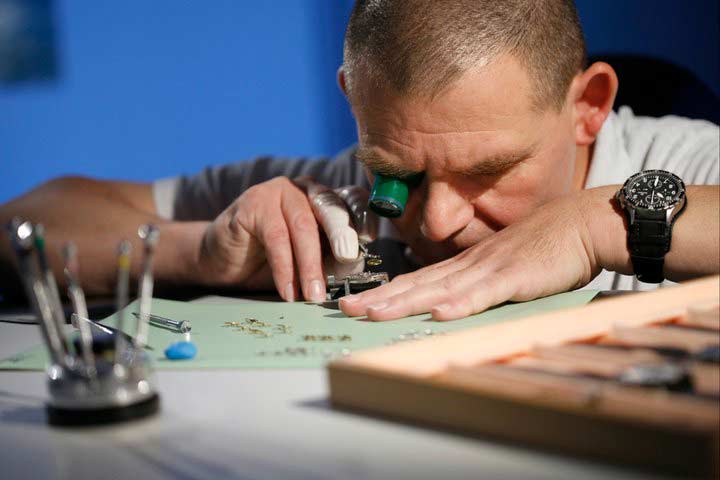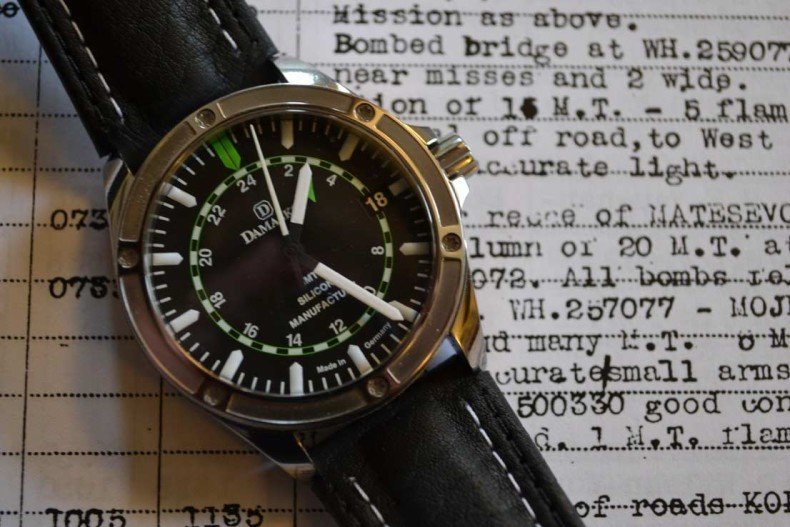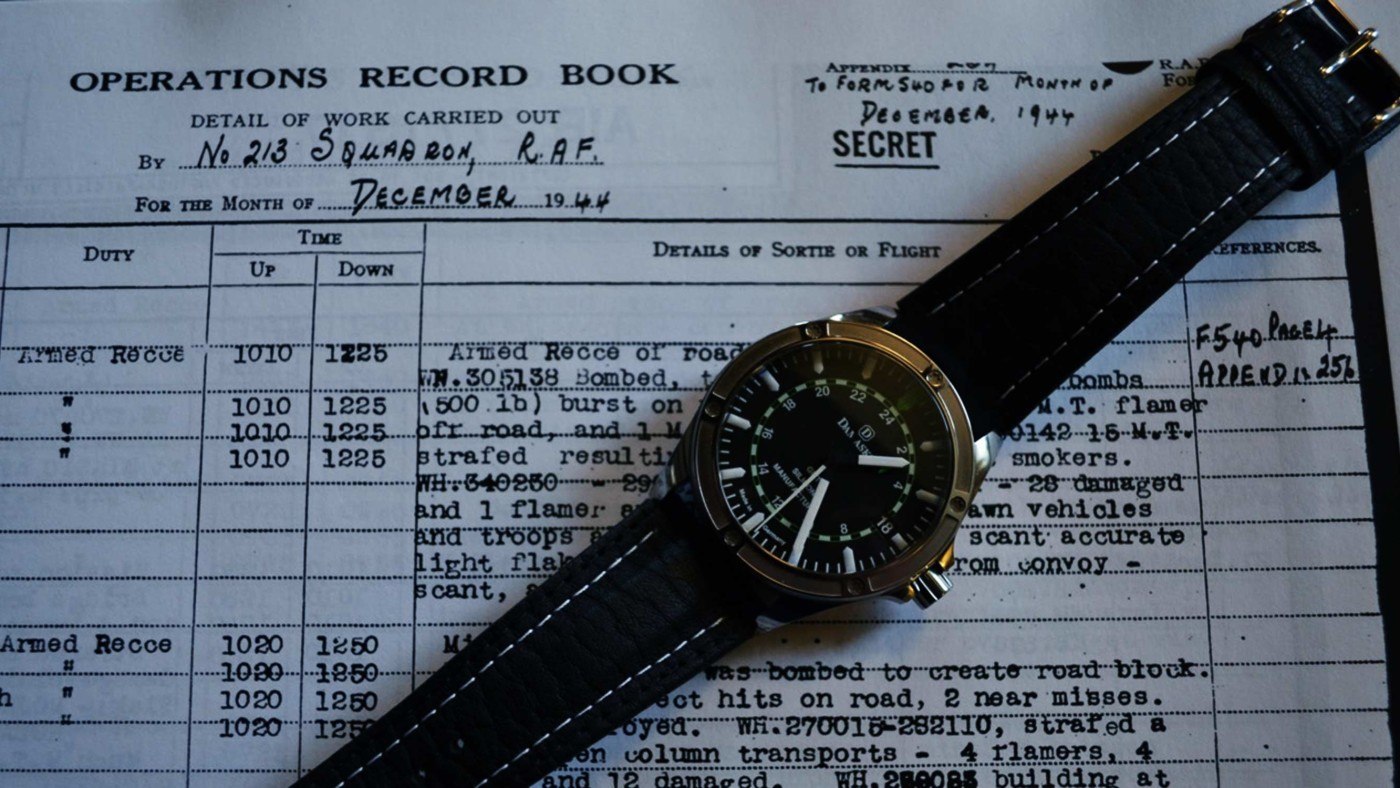As today’s column appears we are in the middle of the vast Baselworld watch expo in Switzerland, the most significant show of the year and one in which the giants of the industry whip the covers off numerous new pieces.
If horology is your thing I suspect you’re seeing ten emails a day, and scores of social media posts, full of new offerings from Rolex, Omega, Brietling, Bremont, Uncle Tom Cobbley and all.
It seems apposite then that today’s column might be filed under the title of “hidden gems”. You won’t find our subject today at Basel, yet.
To explain…
In the world of watches, as with cars and lots of other passions, there are vast numbers of people out there producing items, from the hyper-brands at the top down to tiny, one man band manufacturers who fly under the radars of most of us.
These latter folk tend to fall in to two camps: the utterly bespoke at eye-watering prices (we might think of Roger Smith on the Isle of Man here), or funky budget brands making on-trend pieces fairly cheaply.
What almost never happens is that a firm establishes itself making very high quality watches, at competitive price points, full of technology which puts the big boys to shame, and yet still somehow remains off the map for most buyers.
There is one though, and we’re going to take a look at it today.
One of the joys of writing a column like this is the thought of connecting fellow enthusiasts with watches they might not have known about. I genuinely think our focus today is one of the best kept secrets in the world of watches, although it can’t remain so for long.
The firm we’re looking at today is still a family company, run by a man and wife team, their sons and daughters, and a small workforce of around 25. Its pieces, protected by more than 80 patents, are made with a precision and relentless drive for perfection which compares to (and often beats) anything in the industry and, perhaps most surprising, they are made without compromise of materials, technology or processes despite costing between £900 (with a modified ETA movement) and £3065 (entirely in-house – 90% of the watch is made by them, with only the jewels, crystal and leather straps bought in from outside).
The company is Damasko, from Barbing in Germany, and I will nail my colours to the mast here and say that in a few years’ time they will not only be vastly better known, but that the entry price point to owning one of their watches will be a lot, lot higher than it is today.
It is Damasko’s history as a very high-tech metals processing company which sits at the heart of its ability to make such watches at reasonable prices. Put simply, the tooling, R&D and training costs of building up the manufacturing base and expertise they have would have needed to produce what they do from scratch would have made the entire watch venture impossible. The watches would have had to cost £10,000+ to make the business viable, and that’s a lot of money to pay for something from a company few people have heard of.
But by the time the idea of making their own watches occurred to Konrad and Petra Damasko, their company was already a leader in numerous fields, making ultra-high-grade components for the aviation and space (and watch) industries and with a host of patents for innovative materials already registered.
That didn’t make it any less of a risk, or any less of a major undertaking, but it meant they started from a very good place.

Konrad Damasko
Damasko’s range focuses on modern takes on the pilot watch, with a sporting bent. They are tool watches first and foremost, with high-accuracy, reliability and robustness at the core.
In an industry where marketing seems to often lead and design follow, the family and their small workforce are a breath of fresh air. Their focus is entirely on quality, not PR, which is one of the reasons Damasko has managed to get to where it is relatively unnoticed.
For example, Damasko’s cases are made from ice-hardened stainless steel using a patented process which makes them about four times harder than steel cases found elsewhere in the industry.
The machine which cuts the cases starts on a Monday morning, and everything it makes until Tuesday lunchtime is thrown away. Yes, you read that right. Until the machine and the building temperature stabilise, Damasko consider the early week cases not absolutely perfect, so they bin them.
Their “Black” coated models take this to another level. Each is coated in “Damest”, another patent. I can’t tell you what’s in it, but I can tell you that I spent some time this week trying to scratch one with a sharp four inch wood screw and couldn’t make a mark on it. At all. The same woman coats all of them by hand, by the way.
Innovation continues inside. Konrad Damasko had never dealt with silicone hairsprings and escapements when he decided he wanted his watches to have better ones than everyone else’s, but he assumed the scientific principles involved must be familiar and set about developing his own compound. To say the result has involved a lot of gentlemen from Switzerland asking for urgent meetings is something of an understatement.
We could go on to talk about the four point hybrid ball bearing with micro-balls made out of silicon and a dozen other things but we’d end up back at the same place – quality which you won’t find for the cost anywhere else.
So let’s have a closer look at one.


This is my own favourite from the range, the automatic 42mm DK200 with Damasko’s own A35-2 movement with GMT function and central seconds, date at 3 o’clock and a 52-hour power reserve. It is 100m water resistant and sits in the middle of Damasko’s range at £2580.
The list of Damasko patented innovations on all the company’s watches in this price point is (literally) too long to repeat here, but as well as those I’ve already mentioned the DK200 includes a crystal gasket resistant to UV radiation, a solid screw display back with Damasko’s O-ring “Viton” gasket, and permanent lubrication of the sealing element of the (hardened) crown.
And whilst we’ve talked a lot about quality and technology, one of the stand-out features of this GMT is that it’s mighty handsome; purposeful and clear in design as a good tool watch ought to be but with fun dashes of green which really work on the wrist.
I tend to use the fact that I commute to London, regularly standing in the buffet car of a train, as a Litmus test for watches. There’s no doubt that this Damasko rivals a Bremont I wore last year as the watch which has led to the most glances and questions. It’s striking initially, and then people tend to try to subtly crane their necks to see what it is.
I wrote recently here about smart watches in fairly cynical terms, so I make no apologies whatsoever for seeming to be a cheer-leader for this little German company today. Why not? They are dedicated people making fabulous watches which, I think, represent the best value for money out there at the moment.
The watch industry is a funny place, with endless behind the scenes shenanigans going on about which brands get in to which retailers, or to which shows. Many watchmakers seem more concerned about getting in to Harrods than making the best watch they can for the money.
Damasko are the opposite. My advice to you, fellow watch addicts, is to raid the piggy bank and get one before Harrods come to them.


